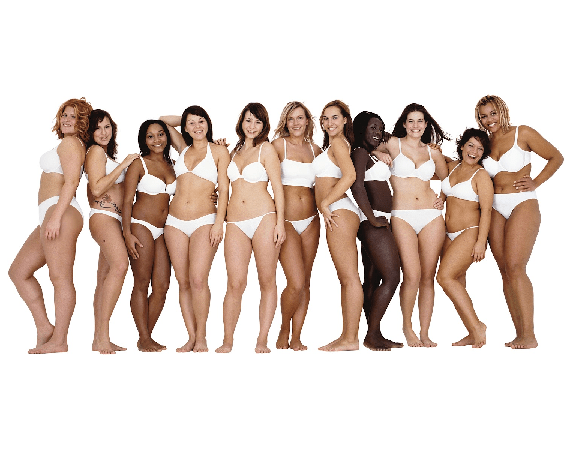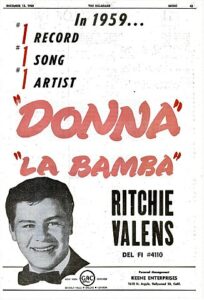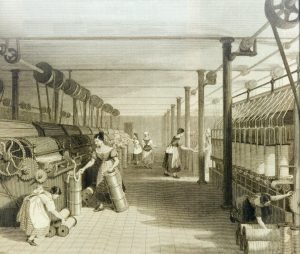The beauty industry is one that has dominated in terms of sales and marketing for decades. It is a field that many are attracted to, yet few take the time to understand how their projected images affect one’s self-image. Though, as many say, “beauty is in the eye of the beholder,” one company realized that beauty lies within all.
In 2004, Dove launched the Campaign for Real Beauty, which was meant to broaden the narrow view of beauty within society.1 Before the release of the Campaign for Real Beauty, Dove attempted to highlight the creamy, moisturizing feel that defined the soap brand by emphasizing the beauty in pampering oneself – oftentimes depicting a beautiful, thin woman, with red lipstick and painted nails. Taking a drastic risk in their marketing strategy, Dove sought to promote a new idea of beauty; they did so by using real women whose looks and weight were far different from the typical model—and it was a smashing success.2 But this success would not have been possible without the creative minds behind the project and the annihilating of what society says beauty should be.

For many decades, the beauty industry has marketed its products with images of the newest, most glamorous, most chic new looks for individuals to try. People love the process of making themselves feel beautiful, and tend to jump at the newest, most popular products to arrive in the market. Specifically, the beauty industry targets women by appealing to the “ideal” image of beauty that is popular at that particular point in time. The most used approach they take is in convincing women that what is most important about them is the way they look. The most common ideal of beauty (especially prevalent since the post-war 1950s) dominant in the minds of many today, is a tall, thin woman who is caked with flawless makeup with silky hair and a straight, white smile. Beauty is not only something that women feed off of, but it has become something people look to to define their own self-confidence. Magazines, games, and social media alike are doused with unrealistic portrayals of beauty. Though there is a high awareness of the impact that media’s idealization of thinness has on women’s health, the industry remains strict to a narrow range of cultural images of attractiveness.3 Before the Dove Campaign for Real Beauty was launched, women, for many years, became used to seeing themselves as being “less-than” that of others. In adapting to change, the beauty industry follows closely the shifting trends of the times. For example, the 1950s was characterized by rolled bangs and winged eyeliner, the 1980s by bold eye shadow and crimped hair, and the 2000s by fake tans and lip gloss.4 In following these trends, women have long adapted to the societal standard of beauty in an attempt to better fit in. These stereotypical views of the ideal woman is what not only feeds the minds of young girls, but it wrecks the body images of millions of women who don’t see themselves as beautiful. In general, the beauty industry tends to feed the minds of many with their own definition of beauty.
One of the key creators and marketing geniuses behind the Campaign for Real Beauty was Joah Santos. As the Chief Creative Officer and founder of NYLON (a multi-platform media company), Santos paved the way for the creative advertising techniques that were used in a multitude of famous ads. Santos became widely known after his making of the P.O.V. (purpose, originality, value) marketing strategy, which was first used to create the Dove Campaign for Real Beauty.5 Within this strategy, he hoped to simplify marketing by giving value to the content of an ad. Content, he explains, gives a story to the brand; the effect of the story is what matters most. There must be a link between a product and the brand’s purpose in order for the technique to make sense. This, in turn, allows the company to build up its credibility.
His focus on evolving a brand based on its story was revolutionary—he set the stage for perhaps the greatest campaign of the twenty-first century. In addition to this, Santos’ ideas led to the Dove Real Beauty Sketches, which was a short film led by Hugo Viega. Viega, a Portuguese copywriter, focused on the concept of risk-taking in his creative, rather than figuring out what would best sell. In his commercial campaign for Dove, Viega hoped to show women that they are more beautiful than they think. To do so, he had various women describe themselves to a sketch artist who could not see them. The sketch artist then drew images of those same women, as described by strangers who had met them the day before. When these images were compared, the stranger’s image was by far more flattering and accurate for every woman who participated. Not only did this video go viral in 2013, but it is said to be one of the most powerful and thought-provoking films Dove has ever released.6 These two men had an enormous role within the Campaign for Real Beauty, with their “test-and-learn” strategy taking them a long way. Ultimately, they sought to express to women that their imperfections do not define who they are. Without them, the campaign would not have grown into what it is today.
The conversation of beauty in today’s society is one that is standardized across the board. The projected images of beauty within media and advertisements alike are what influence the way women see themselves in relation to the rest of the world. These idealized images that are prevalent in advertising are what make consumers feel that they must strive for some unattainable goal of beauty. This, in turn, makes them feel threatened in a way that has a negative effect on their self-esteem.7
Humans in general have a tendency to compare some aspect of the self to that of others, and this is known as social comparison. Social comparisons take place when individuals are heavily influenced by their social environment.8 Projecting ultra-thin models as a beauty ideal comes with its costs. The general conclusion among researchers is that the exposure to thinness-depicting media is related to greater body dissatisfaction, lower body self-esteem, and self-objectification, especially among young girls.9 Social comparison allows one to understand the projected symbols from media, and how they tend to lower women’s self-assurance in society. The advertising industry routinely utilizes the theory to sell beauty products.10 Men, too, are affected by such standards of beauty; seeing such projected attributes in media, men feel as if they cannot reach those standards, ultimately becoming dissatisfied with their own image.11 Societal standards of beauty have been, and will likely always be, a driving factor in the way individuals view themselves.

In 2004, Dove, in conjunction with the Downing Street Group (a research consulting firm), decided to conduct a massive research experiment to verify the hypothesis that women tend to view themselves as less than optimal. For this, leaders of the Campaign for Real Beauty traveled to ten different countries, surveying a total of three thousand women to find out how they felt about their own appearance. In confirmation of Dove’s guess, the research concluded that merely two percent of women define themselves as being beautiful, and only nine percent described themselves as being attractive.12
The Dove Campaign for Real Beauty was one that was groundbreaking, revolutionary, and bold. Dove began as a company creating moisturizing beauty bars, and evolved into one that insists that women be comfortable in their own skin. This campaign not only encouraged confidence, but it widened the narrow view of what is considered “beautiful” by societal standards (i.e. thinness, fair skin, etc.).
Feminism (the advocacy of women’s equality in society) is a concept that is present in the Dove Campaign for Real Beauty. From the 1960s on, women have empowered themselves to advocate for their own definitions of beauty, not allowing a patriarchal society to define them. For too long, women were told to accept their roles in society and live domestic lives as housewives and caretakers. There has been a long effort to include emancipatory ideals in marketing campaigns, most often met with little transformation.13 To put it simply, the fight for all body types, skin tones, and hair types to be expressed equally in media campaigns has been long fought, yet most advertisers stick to stereotype models, lacking diversified representation. Before the 1960s, gender roles were reinforced by mass media and popular culture. However, after WWII, because women made up a large percentage of the postwar labor force, things began to change for women and their roles in society.14 Even in the 1950s, women began to take on new roles in society even as they were encouraged to play traditional roles. These new roles represented the beginning of women breaking away from the conformist ideals of that time period.
In relation to the twenty-first century, women have continued to advocate equality via feminist activism. The Dove Campaign for Real Beauty is a prime example of this, as it pulls away from the commonplace, stereotypical view of women in society today. In using “feminist consumerism,” the Campaign for Real Beauty has the power to disrupt gender norms with its engagement in grassroots activism, as well as in its critiques of the beauty industry.15

In all, the Dove Campaign for Real Beauty is one that has set the stage for groundbreaking change in the minds of women in today’s society. Not only have some beauty companies restructured their use of models and media strategies, but the idea of using “real women” has been popularized. In kicking off a conversation of women’s roles in society’s standards of beauty, the campaign reframed the very idea of female attractiveness. The empowerment of women to be confident in their own skin is what drove this campaign; it not only celebrated the natural beauty of women around the world, but it reinforced the idea that societal standards do not define who you are.
- Encyclopedia of Major Marketing Campaigns, 2007, s.v. “Unilever PLC,” by Jonathan Kolstad and Judson Knight. ↵
- Encyclopedia of Major Marketing Campaigns, 2007, s.v. “Unilever PLC,” by Jonathan Kolstad and Judson Knight. ↵
- Sarah Grogan, Body Image : Understanding Body Dissatisfaction in Men, Women and Children (London: Routledge, 2008), 11-12. ↵
- Fashion, 2015, s.v. “Beauty by the Decade: The Hair and Makeup Trends We Got from Each Era,” by Sarah Harris. ↵
- Revolvy, 2013, s.v. “Dove Real Beauty Sketches.” ↵
- Revolvy, 2013, s.v. “Dove Real Beauty Sketches.” ↵
- Encyclopedia of Gender in Media, 2012, s.v. “Social Comparison Theory,” by Neil Alperstein. ↵
- Encyclopedia of Gender in Media, 2012, s.v. “Social Comparison Theory,” by Neil Alperstein. ↵
- Kimberly Bissell and Amy Rask, “Real women on real beauty: Self-discrepancy, internalisation of the thin ideal, and perceptions of attractiveness and thinness in Dove’s Campaign for Real Beauty,” International Journal Of Advertising 29, no. 4 (November 2010): 644. ↵
- Donnalyn Pompper, Rhetoric of femininity: female body image, media, and gender role stress/conflict (Lanham: Lexington Books, 2017), 15. ↵
- Encyclopedia of Gender in Media, 2012, s.v. “Social Comparison Theory,” by Neil Alperstein. ↵
- Encyclopedia of Major Marketing Campaigns, 2007, s.v. “Unilever PLC,” by Jonathan Kolstad and Judson Knight. ↵
- Josée Johnston and Judith Taylor, “Feminist Consumerism and Fat Activists: A Comparative Study of Grassroots Activism and the Dove Real Beauty Campaign,” Signs 33, no. 4 (2008): 15. ↵
- Khan Academy, 2016, s.v. “Women in the 1950s,” by Michelle Getchell. ↵
- Josée Johnston and Judith Taylor, “Feminist Consumerism and Fat Activists: A Comparative Study of Grassroots Activism and the Dove Real Beauty Campaign,” Signs 33, no. 4 (2008): 941-66. ↵




95 comments
Danniella Villarreal
This article makes me happy because it shows women that are not photoshopped to look skinny. It shows that even if you are not close to looking super skinny and if you don’t have a flat stomach you are still beautiful in your own skin. It is nice to see these women love themselves and not follow what society thinks beauty is. Dove could have lost a lot with this campaign but instead, they set a positive message out there for all types of women.
Nadia Carrasco
This article was everything to me! With Dove being such a well known brand in the business they have definitely earned their respect. Them coming out with this article just proves what them as a company stand for and they were not afraid to show it! This campaign was beautiful and very powerful, Dove sent out a message that the people needed to hear.
Sharriah Martinez
This article warmed my heart. It is amazing to think how much of a risk dove was taking when the started this campaign. This campaign broke beauty barriers for women, I personally think all women different shapes, color and sizes are beautiful. I, a smaller petite girl get body shammed a lot. I know what it feels like to not feel comfortable in your skin or body. But it is amazing to know and see these women embracing what God gave them and having confidence in themselves. It makes people like me think twice and sparks a light to think positive about myself. This world is cruel and all women, especially young girls should know that body positivism is important, embrace what god gave you and live.
Samire Adam
I absolutely love this whole article. As a woman of color, reading an article about beauty makes my day. This touched my heart that strangers perceive these female participates highly more flattering than the participate themselves but also upsetting because I believe in self confidence and beauty within. This is a great article to share to promote and spread awareness of loving yourself and that beauty comes in every size and shape.
Alexandra Lopez
A company as old and prestigious as Dove they had a lot to lose if this campaign were to fail. Luckily, they were a success and while this campaign was successful it also broke beauty barriers for women. This article was written eloquently and respectfully that elaborated on the many barriers women face in the beauty industry even in soap. (reposted)
Rosa Castillo
I have always been a fan of Dove’s Real Beauty campaign, they are one of the few companies that support and advocates for body positivity for everyone. I admire that Dove has dedicated itself to helping women become comfortable in their own skin no matter what size they are. I think Dove does a fascinating job at running their campaign and I appreciate the author for writing about this amazing mission.
Julissa Cantu
Giving new light to what is beauty is important for young girls as they grow up in this cruel world and it is great that Dove highlights on that premise in their campaigns. It is also important for Simmons to highlight these feats as well as criticize the soap industry for their manipulation of what it means to be beautiful. Simmons did great at depicting Dove as well as the approach they utilize in their campaigns to educate the public and encourage them to learn from these instances. There were some sentences where words were repeated and could have been structured better, though. Proofreading is an author’s best friends.
Alexandra Lopez
A company as old and prestigious as Dove they had a lot to lose if this campaign were to fail. Luckily, they were a success and while this campaign was successful it also broke beauty barriers for women. This article was written eloquently and respectfully that elaborated on the many barriers women face in the beauty industry even in soap.
Faten Al Shaibi
I liked this article very much. Because it Talk about fact that many people do not realize. Real beauty is a beauty that grows over time. It is not the beauty of the fashion models that the screen shows and that goes away with time. That’s why this advertising campaign succeeded. In my opinion, all women are beautiful in the eyes of those who love them
Enrique Segovia
I respect this campaign by Dove. I had seen it before, and I personally thought that it was an ingenious way of advertising their product. I thought that promoting a beauty campaign that included women of all races, size, color, etc. was clever, and I devoted my respect towards Dove. Their message, as this article supports, is inspiring and it is inclusive for all women. A beauty campaign can teach the world that beauty can be achieved by anyone, regardless of your physical appearance.